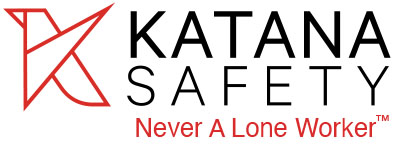Lone worker safety is increasingly vital in industries like healthcare, social services, utilities, and logistics. While the U.S. relies on broad occupational safety laws, many developed countries take a more prescriptive and technology-integrated approach. Below is a comparative breakdown of how countries in the UK, Europe, Asia, and Australia address lone worker safety through legislation and technological innovation.
United Kingdom
Legislation:
The UK has some of the most advanced protections for lone workers under the Health and Safety at Work Act 1974 and the Management of Health and Safety at Work Regulations 1999. Employers are legally obligated to perform risk assessments, implement safety controls, and ensure lone workers can communicate effectively.
Technology:
UK employers widely adopt lone worker devices like:
- StaySafe (mobile app with GPS tracking and check-ins)
-
Peoplesafe (24/7 monitored alarms with fall detection)
These solutions are often monitored by professional response centers and tied to formal escalation protocols.
European Union
Legislation:
Under EU Directive 89/391/EEC, employers must prevent occupational risks—including those faced by lone workers. Implementation varies:
-
Germany: Requires formal lone worker risk evaluations, especially in hazardous environments.
-
France: Mandates lone worker protection plans (Plan de Prévention) in industries like home healthcare and public service.
Technology:
Across the EU, you’ll find:
-
Twig devices (wearables used in Germany and Finland, with SOS, motion sensors, and man-down alerts)
-
Lone Worker Manager platforms integrated with enterprise systems in France and the Netherlands
-
GeoZon in Belgium, providing geofencing and automated check-in systems for mobile workers
Australia
Legislation:
Australia enforces lone worker safety through the Model Work Health and Safety (WHS) Act, requiring businesses to identify risks and implement control measures. It includes physical and psychological hazards.
Technology:
Australian employers use tools such as:
- SafeTCard (a wearable with live audio monitoring and panic alert)
-
Guardian EVERYWHERE (cloud-based system with location tracking and remote support for field staff)
Asia (Japan, South Korea, Singapore)
Legislation:
While lone worker-specific regulations are less developed, general workplace safety laws apply:
-
Singapore’s WSH Act holds employers accountable for managing all foreseeable risks.
-
Japan’s Industrial Safety and Health Act requires oversight but lacks explicit lone worker clauses.
Technology:
Asia is seeing increased use of:
-
NaviCall (Japan) for elderly care and lone worker alerting
-
Samsung Knox-integrated lone worker apps in South Korea
-
my360 Safety (Singapore) for location tracking and emergency alerting in logistics and healthcare
Comparison with the United States
The U.S. Occupational Safety and Health Administration (OSHA) requires a general duty of care but has no lone worker-specific rules outside high-risk industries (e.g., confined spaces). As a result, many U.S. companies develop internal policies but lack legal enforcement or standardization.
What’s Coming Down the Pipeline in the U.S.
To catch up, several promising developments are emerging:
-
Pending legislation like the Save Healthcare Workers Act, would make it a crime to assault hospital workers.
-
H.R. 1195, which passed the US congress in 2021 and requires the Department of Labor to address workplace violence for healthcare and social service workers, although it remains vague what specific steps companies should take
-
Tech adoption growth, with platforms like KATANA Safety, being implemented to connect lone workers with emergency services quickly during an emergency
-
AI-driven predictive safety platforms that monitor patterns of risk behavior and location anomalies
As awareness grows and the market matures, the U.S. is likely to align more closely with international best practices in lone worker protection.
At KATANA Safety, we specialize in lone worker protection and emergency escalation. Learn more about our solution and be ahead of the curve when the world standards make their way to the U.S.
